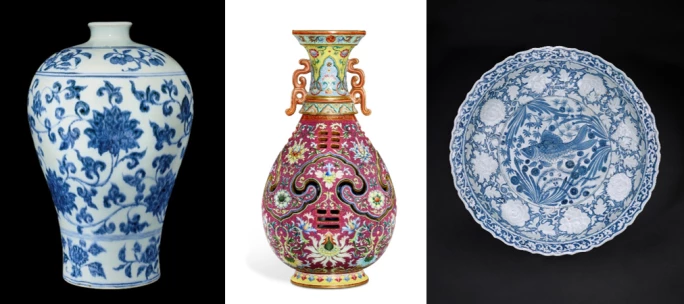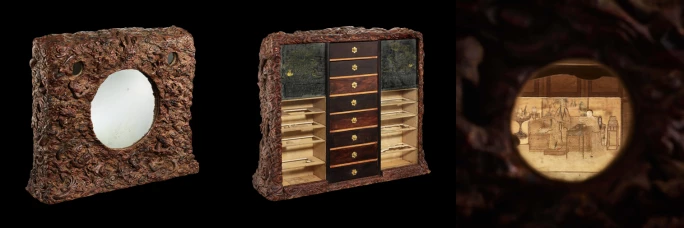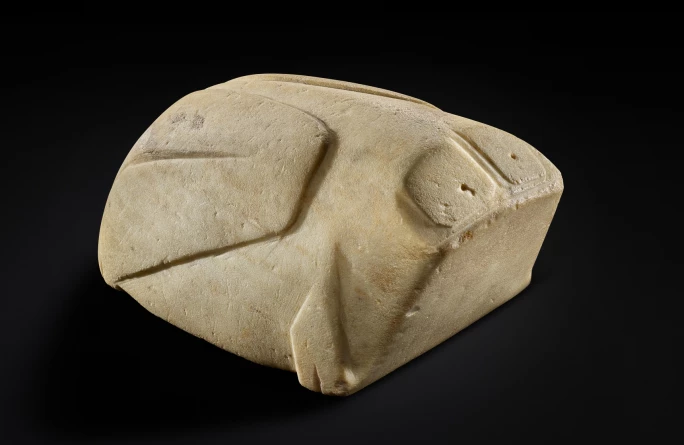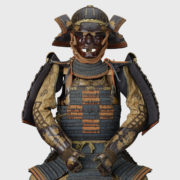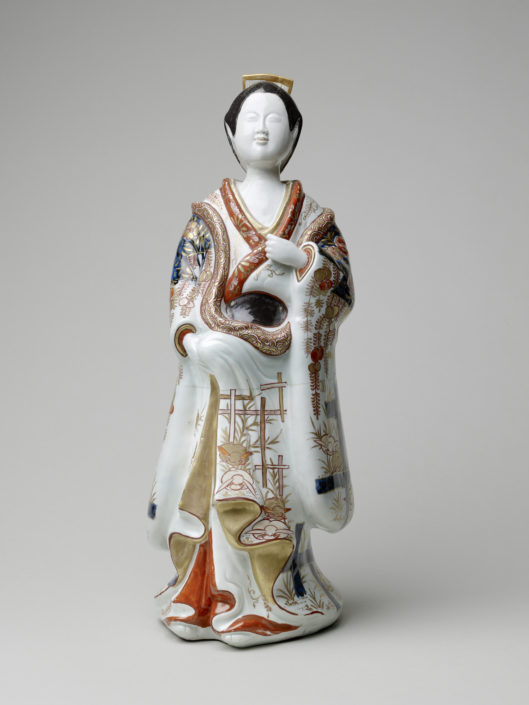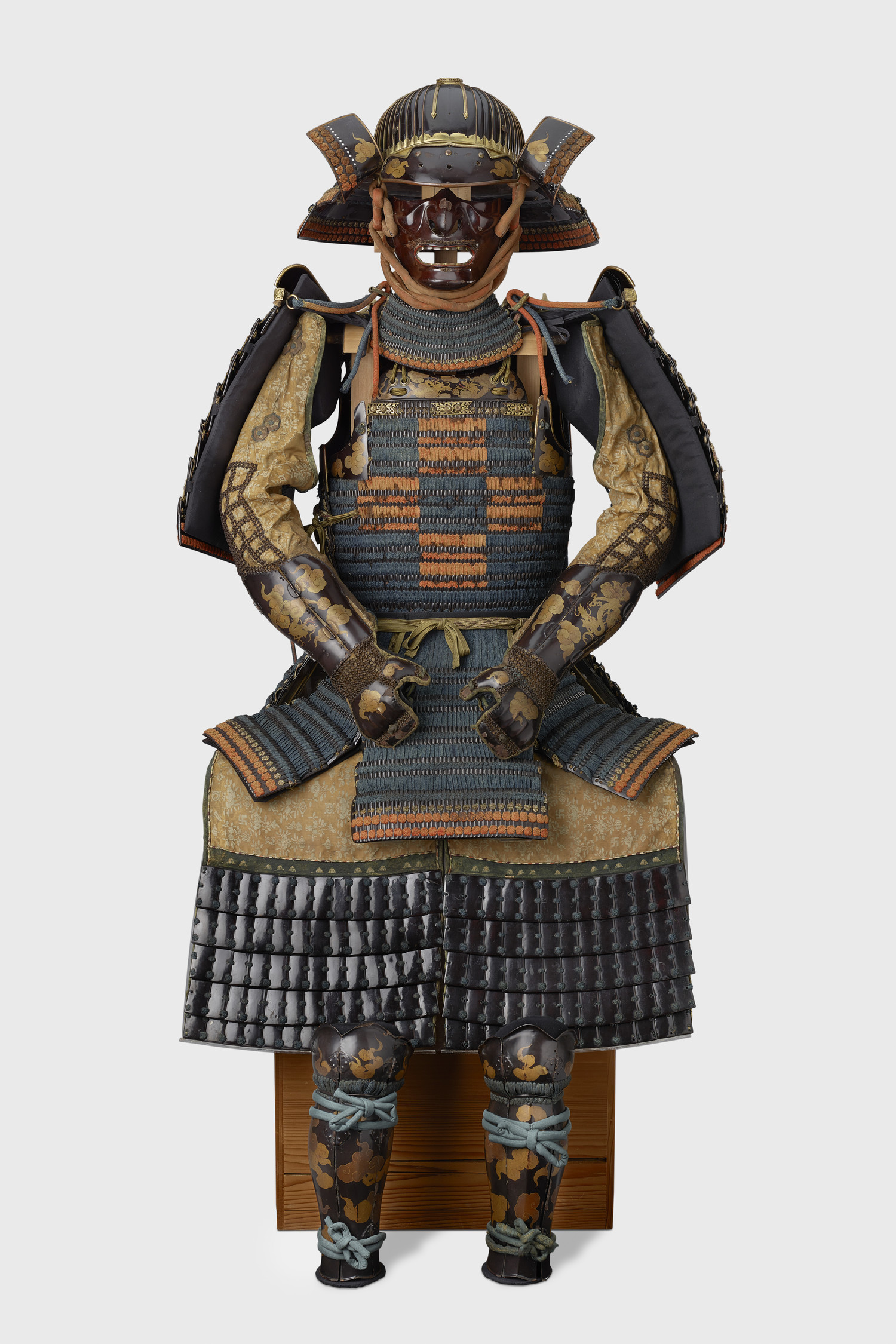Sotheby’s Hong Kong presenta la serie de subastas de obras de arte chinas más importante de la última década
Hong Kong
Convergencia de las mejores colecciones privadas de los mejores coleccionistas de arte chino del mundo
Dr. Wou Kiuan, Sr. Joseph Lau y Sir Joseph Hotung, y más
(De izquierda a derecha)
La colección privada de Joseph Lau
Un hermoso jarrón ‘Lotus Scroll’ azul y blanco, Meiping, dinastía Ming, período Yongle
Est: 25 a 35 millones de dólares de Hong Kong / 3,2 a 4,5 millones de dólares estadounidenses
La colección del Dr. Wou Kiuan
Un magnífico jarrón reticulado Yangcai ‘Trigrams’ con suelo de rubí,
Marca de sello y período de Qianlong
Est: HK$ 60 – 120 millones / US$ 7,6 – 15,3 millones
La colección personal del difunto Sir Joseph Hotung
Un cargador de ‘pez’ con púas azul y blanco moldeado único y muy importante, dinastía Yuan
Est: HK$ 30 – 50 millones / US$ 3,8 – 6,4 millones
Subasta: 8 – 9 de octubre de 2022
Este octubre, Sotheby’s Hong Kong presenta la serie de ventas de obras de arte chinas más importante con la convergencia de las mejores colecciones privadas de los coleccionistas de arte chinos más grandes del mundo, incluidos el Dr. Wou Kiuan, el Sr. Joseph Lau y Sir Joseph Hotung. El lote estrella de esta temporada es un magnífico jarrón reticulado de “trigramas” yangcai con suelo de rubí del período Qianlong (estimado: HK$ 60 – 120 millones / US$ 7,6 – 15,3 millones) de la colección Dr. Wou Kiuan Parte II, una colección cuidadosamente Venta curada que presenta seis obras maestras del siglo XVIII. La colección de Joseph Lau, que comprende 11 gemas imperiales, ocupa un lugar de honor entre las mejores jamás reunidas en el campo. En el corazón de la colección personal de Sir Joseph Hotung se encuentra una serie de obras maestras que trazan muchos de los picos de la larga historia de China, desde el Neolítico hasta la dinastía Qing. A la sólida lista de colecciones privadas de renombre de esta temporada se suma una selección de jades Ming y Qing de la colección de Victor Shaw y un grupo de obras de arte arcaicas de una importante colección japonesa.
Esta serie de ventas de otoño marca una oportunidad única en la vida para coleccionistas y entusiastas del arte chino. Muy rara vez verá una línea tan superlativa de las colecciones de arte chino más famosas del mundo. Estaremos ofreciendo obras maestras frescas para el mercado en casi todos y cada uno de los campos del arte chino y esta es posiblemente la serie de ventas más esperada que Sotheby’s haya presentado jamás.
NICOLAS CHOW, PRESIDENTE, ASIA Y PRESIDENTE, CHINESE WORKS OF ART
Estas ilustres colecciones privadas no solo muestran el gusto, la visión y la pasión impecables de los coleccionistas de arte chinos más influyentes de este siglo, sino que también ofrecen una ventana a la extraordinaria profundidad y amplitud de las formas de arte chinas.
XIBO WANG, JEFE DEL DEPARTAMENTO DE CERÁMICA Y OBRAS DE ARTE CHINAS
Un viaje a través de la historia de China: la colección del Dr. Wou Kiuan, parte II
Tras el éxito de la Parte I en Nueva York en marzo y el primer capítulo de Hong Kong que batió récords en abril, la venta cuidadosamente seleccionada presenta seis obras maestras del siglo XVIII que muestran el dominio técnico sin precedentes en los hornos imperiales de Jingdezhen, incluido un grupo de porcelanas esmaltadas anteriormente de las reliquias familiares de Fonthill que no han aparecido en el mercado en alrededor de medio siglo. Los aspectos más destacados incluyen un magnífico y posiblemente único jarrón reticulado de “trigramas” yangcai con fondo de rubí de Qianlong, corroborado por los archivos de la corte que se hizo en 1743 o inmediatamente después. El jarrón es un testimonio tangible de la culminación sin precedentes e incomparable del virtuosismo técnico en la producción de porcelana entre 1741 y 1743, impulsada por una reprimenda imperial del emperador Qianlong. (Ensayo del catálogo disponible a pedido)

MARCA DE SELLO Y PERÍODO DE QIANLONG
A. 31 CM
EST: HK$ 60 000 000 – 120 000 000 / US$ 7 644 000 – 15 287 000
Otro punto a destacar también dotado de la procedencia de Fonthill es un magnífico par de jarrones de “mariposa” yangcai magníficamente esmaltados sobre un fondo rosa brillante de una manera imbuida de influencias occidentales y cocidos a la perfección.

UN MAGNÍFICO PAR DE JARROS YANGCAI ‘BUTTERFLY’,
MARCAS DE SELLO Y PERÍODO DE QIANLONG
H 47 CM
EST: HK$ 40 000 000 – 60 000 000 / US$ 5 096 000 – 7 644 000
Gemas de Porcelana Imperial de la Colección Privada de Joseph Lau Parte II
El nombre Joseph Lau resuena entre los coleccionistas de todo el mundo y es uno que representa la excelencia. El arte chino se encuentra en la génesis de la aventura de Joseph Lau con el arte y es en el arte chino donde se fijó en su ojo exigente antes de expandir sus horizontes. Lau reunió una de las mejores colecciones de porcelana china de todos los tiempos, articulada en torno a obras maestras, cada una representativa de lo mejor de un determinado período y tipo, y seleccionadas cuidadosamente de las colecciones más prestigiosas.
Las ofertas de esta temporada incluyen una porcelana azul y blanca muy fina que data del período Yongle a principios del siglo XV, el pináculo de los artículos decorados con azul vidriado y un período muy celebrado por el patrocinio imperial en las artes.

DINASTÍA MING, PERIODO YONGLE
31,4 cm
EST: HK$ 25 000 000 – 35 000 000 / US$ 3 185 000 – 4 459 000
Este meiping decorado con una voluta de loto es notablemente elegante en su maceta y representa el epítome de esa forma clásica. Se conocen ejemplos similares en los museos del palacio en Beijing y Taipei, así como en las colecciones reales de Oriente Medio de los sultanes otomanos que atestiguan su atractivo universal y su alto estatus.

MARCA DE SELLO Y PERÍODO DE QIANLONG
31,3 cm
EST: HK$ 20 000 000 – 30 000 000 / US$ 2 548 000 – 3 822 000
Este magnífico frasco circular brillantemente esmaltado con frutas representa una combinación particularmente ambiciosa e inusual de los esquemas doucai y fencai, que resalta la fruta madura. El presente ejemplo es superior en todos los aspectos, desde la calidad de la pintura, la riqueza del cobalto, la claridad del vidriado hasta su estado prístino.
Hotung: la colección personal del difunto Sir Joseph Hotung
El difunto Sir Joseph Hotung (1930-2021) fue respetado y reverenciado en el mundo del arte por su colección de jade y por su filantropía. Lo que es mucho menos conocido es su ojo discriminatorio por la calidad y el diseño, y la colección personal formada en su casa de Londres como telón de fondo de su vida, vista solo por unos pocos privilegiados. La serie de ventas dedicadas comienza en Hong Kong con un enfoque en las obras maestras chinas de su colección y se divide en ventas vespertinas y diurnas. Las obras que se ofrecen, que van desde jades neolíticos y bronces de las dinastías Shang-Han hasta muebles de la dinastía Ming y pinturas chinas modernas, cada una representa lo más buscado de su época y tipo. Los aspectos más destacados incluyen un cargador de ‘pez’ de púas azul y blanco moldeado único y muy importante de la dinastía Yuan y una importante y destacada quimera masculina de bronce, bixie, de la dinastía Han, esta última dotada de una prestigiosa procedencia e historia de ilustración que se remonta a tan a principios de la década de 1920 en París.

DINASTÍA YUAN
47,8 cm
EST: HK$ 30 000 000 – 50 000 000 / US$ 3 822 000 – 6 370 000
Este plato es único y se hizo con una atención al detalle que es excepcional incluso entre este raro grupo de platos moldeados en relieve de la dinastía Yuan. Su decoración en relieve no solo es extraordinariamente nítida y detallada, sino que el popular diseño del pez también se representa aquí de una manera muy individual que conoce pocas comparaciones cercanas. Es una obra maestra que combina los mejores y más raros estilos azul y blanco de Yuan.
 UNA IMPORTANTE Y DESTACADA QUIMERA MASCULINA DE BRONCE, BIXIE,
UNA IMPORTANTE Y DESTACADA QUIMERA MASCULINA DE BRONCE, BIXIE,DINASTÍA HAN
L. 27 CM, A. 18 CM
EST: HK$ 6,000,000 – 8,000,000 / US$ 764,500 – 1,019,000
Esta quimera de bronce de la dinastía Han, poderosamente representada con vitalidad y fuerza, es un tour de force de los bronces chinos en su apogeo. Además de la prestigiosa procedencia de Stoclet, la historia de publicación y exhibición de la escultura se remonta a la primera mitad del siglo XX, lo que la distingue de otros bronces arcaicos en manos privadas e incluso de los ejemplos de museo más importantes.
Importante arte chino que incluye jades de la colección Victor Shaw
La subasta de arte chino importante presenta una venta cuidadosamente seleccionada que incluye obras maestras que abarcan cinco milenios, desde el período neolítico hasta la dinastía Qing. Los aspectos más destacados incluyen un gabinete de espejo chenxiang del período Qianlong extremadamente raro y una rana de mármol de la dinastía Shang.
La caja ‘rara’, posiblemente encargada en el año 17 (1752), tiene un espejo flanqueado por dos agujeros circulares a través de los cuales el emperador Qianlong se habría asomado para ver cuadros pintados, uno de los cuales es su más conmovedor y enigmáticamente titulado doble retrato, ‘¿Uno o dos?’ El gabinete de caja poderosamente tallado no solo muestra la influencia del mecanismo occidental en la corte del siglo XVIII en China, sino que es posiblemente el único ejemplo conocido que empleó el emperador Qianlong para reflexionar sobre los matices entre el reflejo literal del yo y la identidad propia.
DINASTÍA QING, PERÍODO QIANLONG,
POSIBLEMENTE ENCARGADO EN EL AÑO 17 (1752)
75,5 POR 16 POR H. 66 CM
EST: HK$ 5,000,000 – 8,000,000 / US$ 637,000 – 1,019,000
La rana de mármol de la dinastía Shang pertenece a un grupo muy raro de tallas de mármol que marcan los albores de la escultura china. Tallada con tanta habilidad y de forma minimalista, la escultura realmente ha superado la prueba del tiempo en su estética atemporal. También de la misma importante colección japonesa que la rana de mármol hay un grupo de obras de arte arcaicas, que incluyen una empuñadura de espada con incrustaciones de oro y plata espléndidamente decoradas, que tampoco se ha visto en el mercado durante más de 30 años.
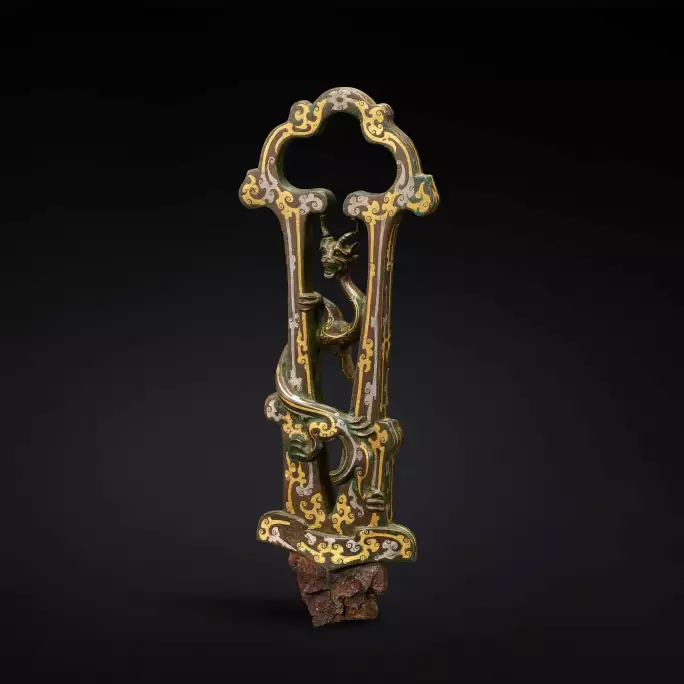
ZHOU ORIENTAL TARDÍO – DINASTÍA HAN OCCIDENTAL TEMPRANA
17,5 cm
EST: HK$ 1,500,000 – 2,000,000 / US$ 191,000 – 255,000
La venta también incluye un grupo cuidadosamente seleccionado de jades Ming – Qing de la colección de Victor Shaw (1935-2020), quien fue reconocido no solo por su ojo perspicaz sino también por sus actividades filantrópicas.



